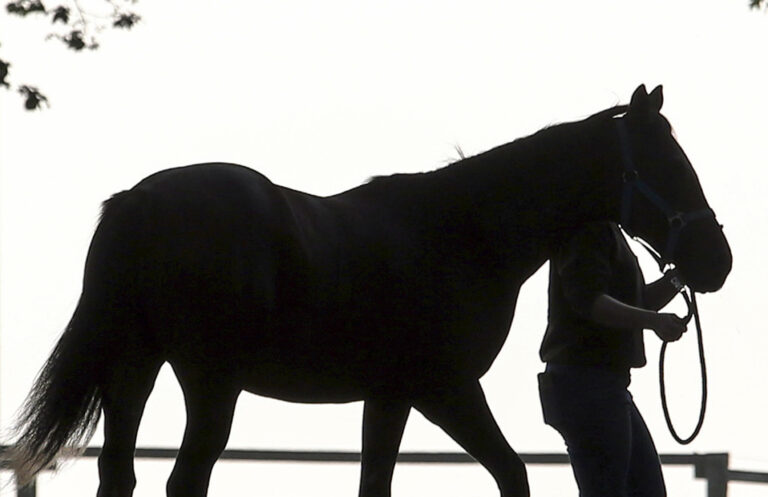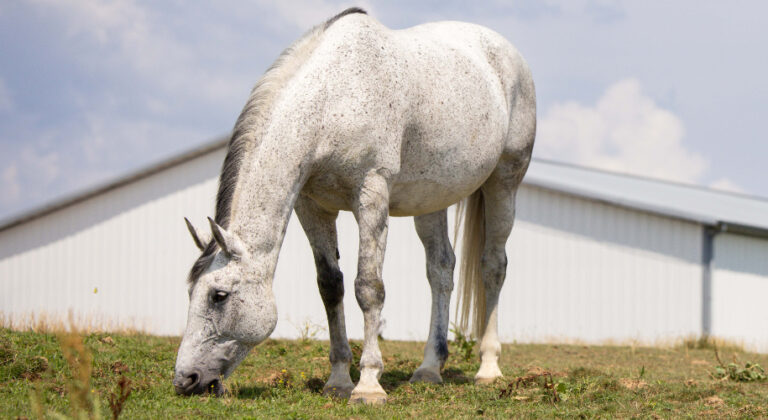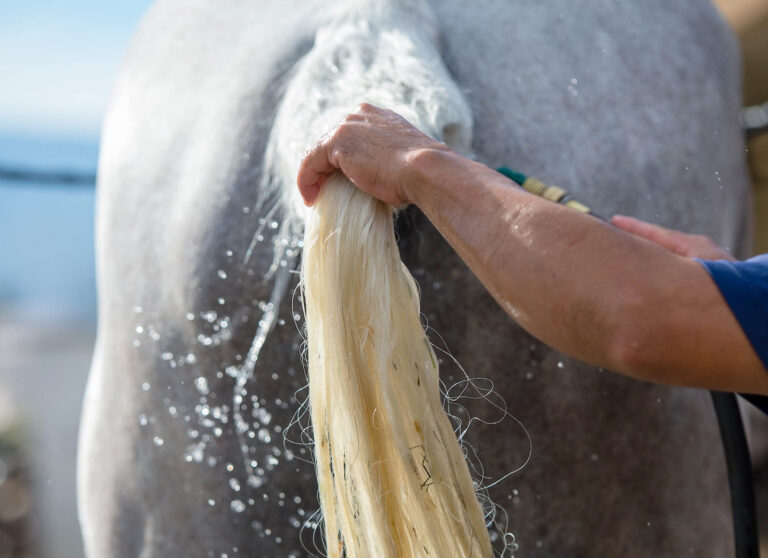
Life is all memory, except for the one present moment,” the playwright Tennessee Williams wrote. It’s true. Even when we’re not thinking about the past, we’re mining memory for information and guidance that will help us navigate life.
What about your horse? What role does his memory play, and how does it affect your interactions with him? The Magic 8 Ball would have to say, “Reply hazy.” Memory just hasn’t been studied in horses as much as in people or other animals. But some research has been done and new information is emerging.
Equine behavior experts Sue McDonnell, PhD, founding head of the equine behavior program at the University of Pennsylvania School of Veterinary Medicine’s New Bolton Center, and Leanne Proops, PhD, a comparative psychologist and ethologist at the University of Portsmouth in England, shared their insights. Evolution shaped the way horses form, retain and use memories, they say, so equine memory differs from human memory in key ways. Understanding how it works can help you train and care for your horse.
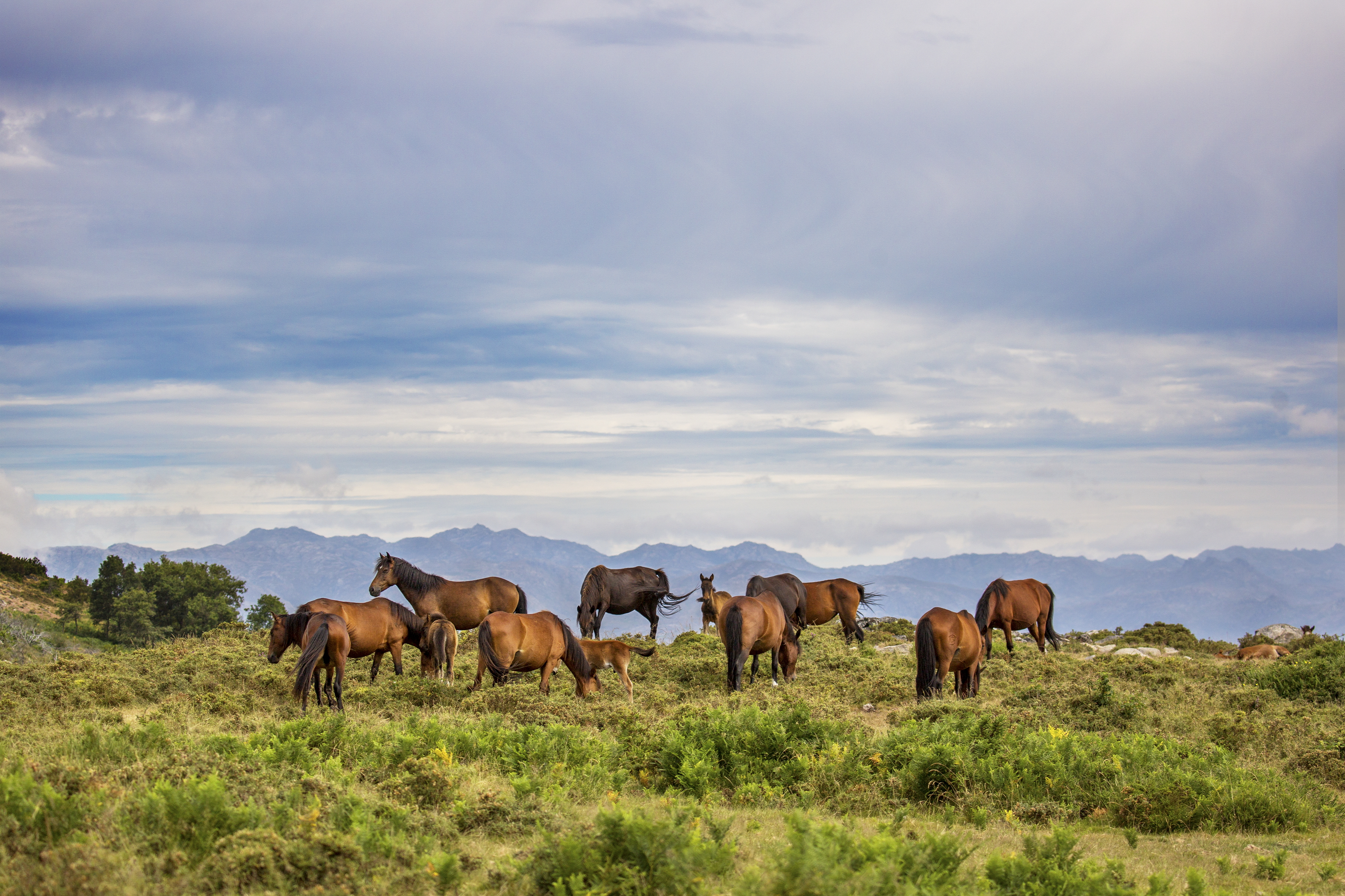
© Lisa Dijk/Arnd.nL
Making Memories
Some basic ideas about memory seem to apply across species, the experts agree. One thought is that memories come in two basic types:
- Implicit memories guide actions and responses behind the scenes, in ways you’re unaware of. If you’ve been riding long enough, for example, you don’t consciously remember how to get on a horse—you just do it.
- Explicit memories are those you consciously recall. If you trip on a certain path, say, you remember and watch the footing more closely the next time you go that way.
When most people talk about memory, they’re referring to the explicit type. Horses build these memories the same way you do—by forging connections between brain cells called neurons.
The brain has billions of neurons, constantly signaling to each other. Hold out a carrot to your horse, and you trigger neurons dedicated to sight and smell. They fire, releasing chemical messengers (neurotransmitters) across junctions (synapses) between cells. The neurotransmitters attach to receptors on the next neuron, prompting it to fire and pass the message on. In a flash, the brain shoots back a call to action: Get the carrot.
The first time a horse sees a carrot, he may hesitate before taking it. Next time he’ll take it faster. That’s because, as a basic principle of neurology states, “neurons that fire together wire together.” The chemical messages form links between neurons, and repeated firing strengthens the links. These links are the basis of memories.
How he’s different: You remember not only your experiences but also knowledge you glean secondhand, from media, school, friends, family and other sources. So far as we know, horses don’t swap stories around the water trough or pass on ancient horse lore late at night in the barn. Their memories are based on experience alone.
But horses may outshine people in associative memory, the ability to forge and retain links between apparently unrelated things. Associative memories form when groups of brain cells that are active at the same time sync up, so that activity in one group facilitates activity in the other.
“Horses are good at forming these memories because they evolved as open plains-grazing animals. Linking experiences to circumstances—physical surroundings, sounds, scents, everything—helped them survive,” says Dr. McDonnell. A horse would remember where a lion attack occurred and steer clear of the place. Today, she says, horses still have “almost photographic memory of the circumstances surrounding negative experiences. They remember what veterinarians wear and what they smell like, and they remember the sounds of the farrier’s truck.
“Horses on the plains also developed complex positive memories, for example, of places where water and food were found,” she adds. “The horses that could form these associations were the ones that survived.”
Research in other species suggests that body chemistry helps etch some experiences in memory. Stress hormones such as cortisol and epinephrine, released during painful and stressful events, may strengthen neural connections. Brain chemicals associated with pleasure may help strengthen positive memories.
Good to know: “People often fail to understand how quickly horses form these memories and how strong they are,” Dr. McDonnell says. “Horses display what psychologists call single-trial aversion learning, which means that one bad experience on a trailer may leave a horse permanently unwilling to load.” Case in point: Temple Grandin, PhD, a professor of animal science at Colorado State University and author of Animals in Translation (Scribner, 2005) and other books, describes a horse that had once been abused by someone wearing a black cowboy hat and remained terrified of black cowboy hats ever after.
It’s easier to prevent negative associations than to erase them, Dr. McDonnell says. You can do this through acclimation, gradually introducing anything potentially scary so the horse can get used to it.
“We’ve found that the process is easiest when the horse feels in control of the situation,” she says. “When you introduce clippers, for example, start with the clippers off and let him explore them. When he touches them with his nose, reward him with a treat. He’ll quickly learn to reach out and touch the clippers for his reward. Then repeat the exercise with the clippers on. When he touches them, turn them off and give a treat.” The horse comes to associate clippers with treats rather than learning to fear them.

Keeping Memories
Horses seem to share our ability to form long-term memories that persist for hours, days, weeks or years, says Dr. Proops. She points to several studies done in the early 2000s by Evelyn Hanggi, PhD, co-director at the Equine Research Foundation in Aptos, California. “In one, horses learned to associate specific symbols and objects with a reward. They were presented with these prompts six years later and still remembered them.”
No one knows if there’s a limit to how long horses retain memories. Cognitive scientists say the longevity of human memories hangs on how strongly they’re encoded, and that depends on several factors:
- Repetition. Links between neurons strengthen when they’re used and weaken when they’re not, so repeatedly activating neural networks involved in a particular memory makes that memory stronger.
- Importance. You’re more likely to remember something if it’s important to you, and the same is true for your horse.
- Perception. How acutely the brain initially perceives the subject of a memory affects how strongly the memory is encoded.
How he’s different: Your horse doesn’t share your priorities. For him, the most important (and memorable) things are related to survival—getting food and avoiding predators. And while you may both be in the same place at the same time, he probably perceives the surroundings differently. He notes and remembers every granular detail, Dr. Proops says, because even a subtle change in the environment may represent a danger to prey animals like horses.
Good to know: Understanding how long-term memories are strengthened can help you in training. Repetition is an essential training tool, for example. A good trainer may get a young horse to pick up the correct canter lead in one session, but she won’t expect the horse to take his leads reliably without many repetitions over many, many days. Once the horse learns, though, he’ll remember after months or years without being drilled.
Positive or negative reinforcements can make the behavior more important to the horse. Dr. McDonnell says, “In most cases the trainer prompts the desired behavior by guiding the horse with pressure (a negative) and rewards the behavior by releasing pressure. But if the behavior is evoked with something positive, the horse learns faster and remembers better. There’s no question that positive training methods are more efficient.” That’s the theory behind reward-based systems like clicker training. The horse learns to associate a click with a food reward, so the trainer can instantly reward behavior using a quick click as a stand-in for the food.
Survival-driven hyperawareness helps explain why a horse may spook at something you don’t even notice, like a trash can moved to a new spot outside the barn. He’s not being willful—he knows it wasn’t there before, so to him it’s a potential threat.
But why, after the horse gets over his shock at seeing the can on his right as he exits the barn, does he spook again when he passes it on his left as he returns? “Having a ‘split brain,’ an explanation I’ve heard for this behavior, isn’t correct—information does cross over from one side of the horse’s brain to the other,” Dr. Proops says. “The response is probably simply because the potential threat is seen in a different context.”
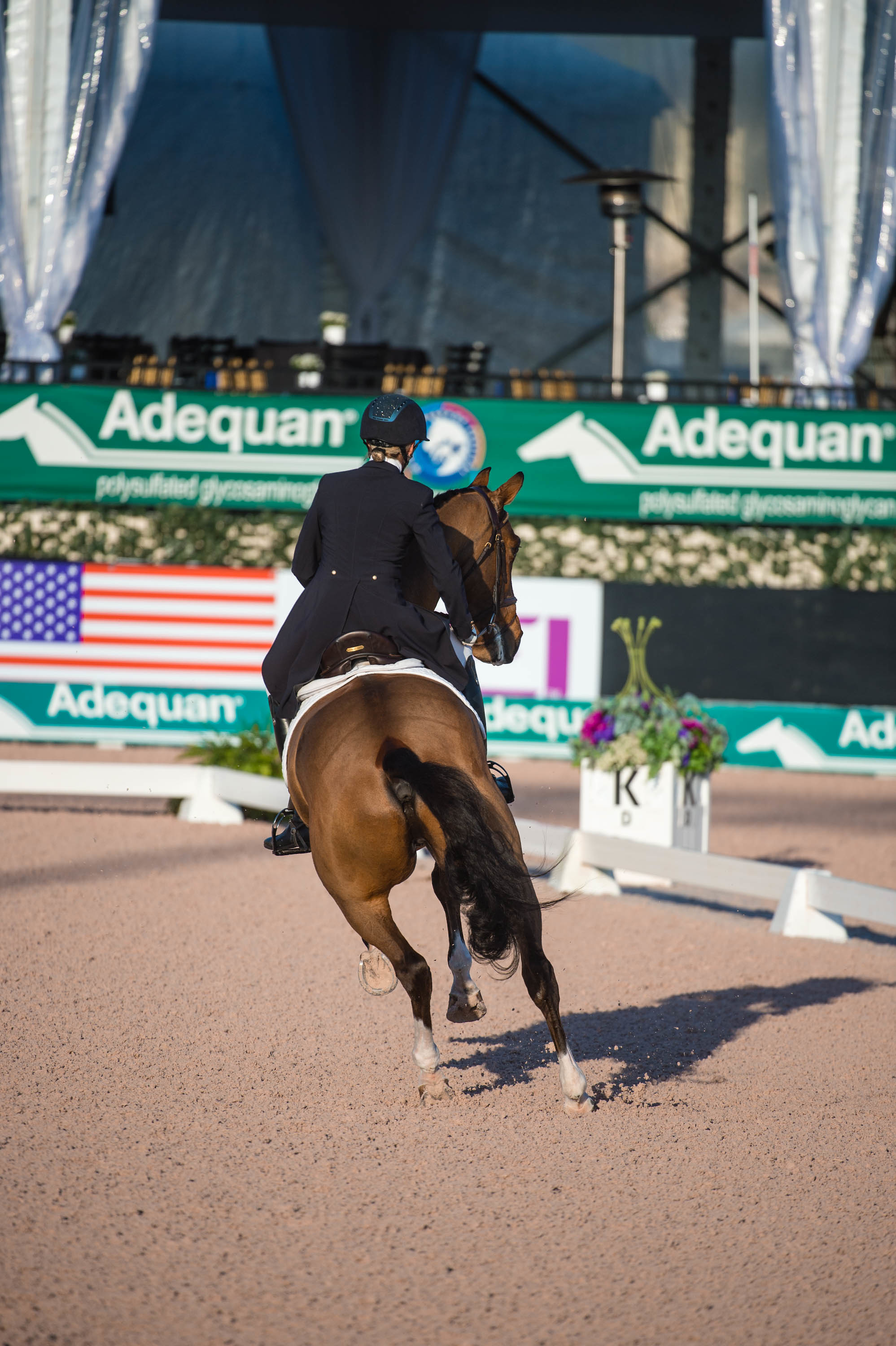
Contexts and Concepts
Humans stand apart in their advanced ability to generalize—to form broad concepts from specific facts by identifying common properties and to apply those concepts in new contexts. But there’s plenty of evidence that horses can do this, too, if to a lesser degree.
In one study, Dr. Hanggi taught horses to discriminate between paired pictures of shapes (circles, triangles and others) with either open or solid black centers. The horses got a food reward for picking the open-center shape in each pair. When they were consistently passing the test, they were presented with paired pictures of new shapes, also with solid or open centers. They immediately picked the open-center pictures.
In other studies horses showed that they understood the concept of relative size, learning to choose the largest or smallest image or object in a group. Dr. McDonnell’s team has done some similar work, so far unpublished.
“Eye position makes it difficult for horses to analyze a two-dimensional object directly ahead, so for our work we used 3-D objects,” she says. “And because horses are excellent at determining the firmness of the ground, we tested the concept of relative density of objects.”
The team placed blocks of different densities on the ground and rewarded horses for selecting the one with the “right” firmness. For half of the horses the correct choice was the softer of the two blocks, and for others it was the firmer. “Once they were choosing their correct response of those two blocks, we presented blocks of a wide variation of densities in pairs. Their task was to touch each and then select either the softer or the firmer of that pair,” Dr. McDonnell says. “In a series of 20 presentations, all the horses achieved accuracy above what would be expected by chance, most choosing correctly on every presentation.”
The results of these studies show that horses can form, remember and apply concepts, including relative concepts like size and density. Horses also show what cognitive scientists call object permanence, the ability to recognize a three-dimensional object when they see it in a different position.
How he’s different: Anatomy helps explain your ability to outperform your horse in concept formation. Positron emission tomography scans, which track brain activity, show that a structure called the hippocampus is critical to memory and highly active when people form concepts. It passes information to the prefrontal cortex, an area that’s sometimes called the brain’s chief executive for its role in decision-making and other high-level operations.
Your horse also has these structures. It’s likely that they’re similarly involved in memory and concept formation, although no one has done a PET scan to prove it. But your prefrontal cortex is larger and far more developed than your horse’s, enabling you to carry out complex mental tasks. This difference gives you an edge in applying concepts to make sense of the world.
For horses, Dr. Proops says, “How easily a learned behavior is generalized will partly depend on the nature of the behavior.” Behaviors with positive associations, such as touching an object to get a food reward, may be more easily generalized than behaviors learned in the context of fear, such as staying relaxed in the face of a flapping flag. “It doesn’t make adaptive sense to generalize widely regarded potential threats—you may overlook a real threat and get eaten!” she says. So, a horse may learn to ignore a flag he sees routinely at home but still react to a flag in another context.
Good to know: “To overcome a particular fear, the horse must first become relaxed in one context,” Dr. Proops says. “Then you can slightly change the context until the horse is relaxed there, and then change the context again.” As the horse gets more used to killer flags or whatever triggers his fear, the new contexts can become more varied. But, she says, “At the outset, they should be quite similar to the context the horse has already learned is safe. The closer the new context is to the learned context, the easier generalization will be.”
Behaviorists call this approach systematic desensitization. Another useful approach is counterconditioning, teaching a new behavior to replace an unwanted one. “If a horse feels threatened and throws his head up when you handle his ears, for example, use rewards to teach him to target the ground instead,” Dr. McDonnell suggests. That way you link ear handling to a positive association in place of a negative one.
The burned-in nature of fear-based memories means that unwanted behaviors can resurface long after you think they’re gone for good. But you stand the best chance of success with patience and a positive approach. “It helps to take as many negatives as you can out of the experience,” Dr. McDonnell notes. “We don’t always realize what the horse perceives as negative. Restraint or confinement, for example, can contribute to panic.”
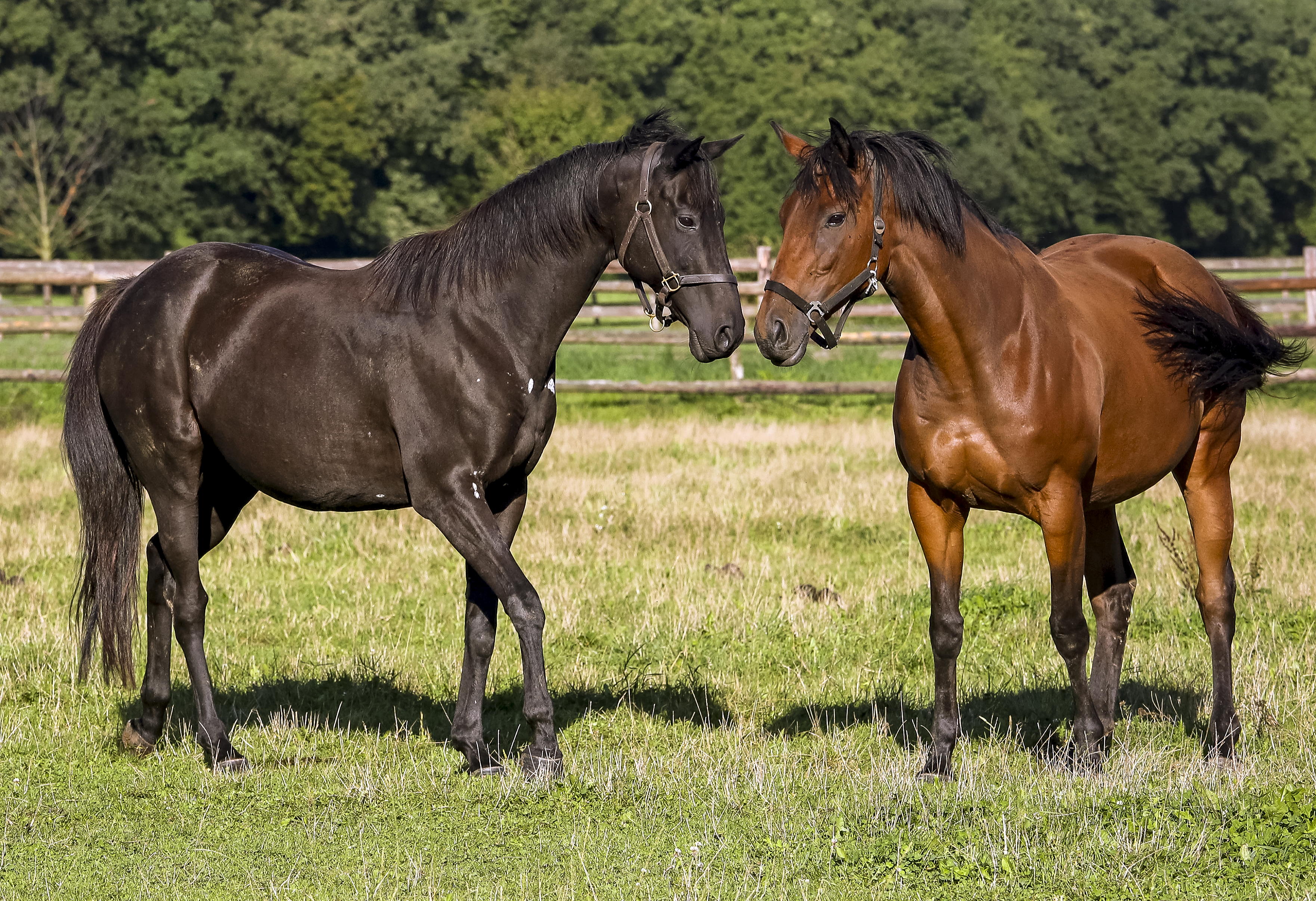
© Frank Sorge/Arnd.nL
Class Reunion, Horse Style
When former stablemates are reunited after a long time apart, they may nicker greetings or, just as likely, seem completely indifferent to each other. Do they recognize each other?
“That’s hard to establish scientifically. How do you determine recognition? But I have no doubt that they do,” Sue McDonnell, PhD, says. “The ponies we study clearly know their families within the herd. If a pony escapes, it will run straight back to its family when it is returned, even when the herd has moved to a different field.”
Like wild horses, these ponies live together for years and form long-lasting relationships. Most sport horses lead a different life—shipped to different barns and competitions, stalled and perhaps turned out alone, with a rotating cast of stablemates. Their “bands” are constantly changing. How well these horses recall a long-lost buddy may depend on how much time the two horses spent together. And how they react when reunited may depend on the relationship they had previously—something Dr. McDonnell says isn’t always easy for people to judge.
“Horses stabled or turned out together can become closely bonded and even call for each other when separated. That doesn’t always mean they are especially fond of each other,” she says. “Separated and put with other companions, they quickly form new bonds. When the original buddies are reunited in a new group, they may prefer other pals to each other.”
Will He Remember You?
You remember every horse that’s been part of your life. But would those horses still remember you?
“I am convinced that horses are every bit as smart as dogs, which do recognize people from the past,” Sue McDonnell, PhD, says. “Horses also make associations, good and bad, with people and they can read honest expressions of emotions.”
Leanne Proops, PhD, has done research that backs up that belief. In her study, horses were shown photos of an unknown person wearing an expression of either anger or happiness. Hours later, they met the model in person, now wearing a neutral expression. Their reactions (as indicated by behavior and heart rate) depended on the expression the model had shown in the photo: They were warier if they’d seen the angry photo and more relaxed if they’d seen the happy one. Models didn’t know which expression the horses had seen, so they couldn’t unintentionally influence the reaction.
“Our research shows that horses can remember previously unknown individuals for at least several hours based on a short presentation of their photographs,” Dr. Proops says, adding, “I don’t know of any research that has looked at the maximal amount of time horses remember their previous owners. I would expect this to be a very long time, however, given what we know about their long-term memory and anecdotal reports.”
This article was originally published in the November 2018 issue of Practical Horseman.





